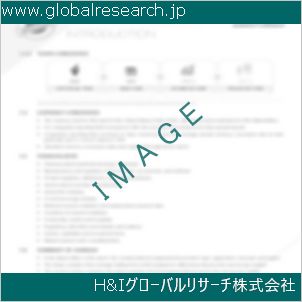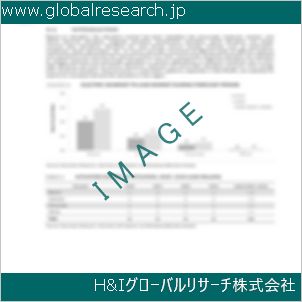Table of Contents
1 Industry Overview of 3,4-Xylidine
1.1 Definition and Specifications of 3,4-Xylidine
1.1.1 Definition of 3,4-Xylidine
1.1.2 Specifications of 3,4-Xylidine
1.2 Classification of 3,4-Xylidine
1.3 Applications of 3,4-Xylidine
1.3.1 Nuclear Application
1.3.2 Non-Nuclear Application
1.4 Industry Chain Structure of 3,4-Xylidine
1.5 Industry Overview and Major Regions Status of 3,4-Xylidine
1.5.1 Industry Overview of 3,4-Xylidine
1.5.2 Global Major Regions Status of 3,4-Xylidine
1.6 Industry Policy Analysis of 3,4-Xylidine
1.7 Industry News Analysis of 3,4-Xylidine
2 Manufacturing Cost Structure Analysis of 3,4-Xylidine
2.1 Raw Material Suppliers and Price Analysis of 3,4-Xylidine
2.2 Equipment Suppliers and Price Analysis of 3,4-Xylidine
2.3 Labor Cost Analysis of 3,4-Xylidine
2.4 Other Costs Analysis of 3,4-Xylidine
2.5 Manufacturing Cost Structure Analysis of 3,4-Xylidine
2.6 Manufacturing Process Analysis of 3,4-Xylidine
3 Technical Data and Manufacturing Plants Analysis of 3,4-Xylidine
3.1 Capacity and Commercial Production Date of Global 3,4-Xylidine Major Manufacturers in 2023
3.2 Manufacturing Plants Distribution of Global 3,4-Xylidine Major Manufacturers in 2023
3.3 R&D Status and Technology Source of Global 3,4-Xylidine Major Manufacturers in 2023
3.4 Raw Materials Sources Analysis of Global 3,4-Xylidine Major Manufacturers in 2023
4 Capacity, Production and Revenue Analysis of 3,4-Xylidine by Regions, Types and Manufacturers
4.1 Global Capacity, Production and Revenue of 3,4-Xylidine by Regions 2019-2024
4.2 Global and Major Regions Capacity, Production, Revenue and Growth Rate of 3,4-Xylidine 2019-2024
4.3 Global Capacity, Production and Revenue of 3,4-Xylidine by Types 2019-2024
4.4 Global Capacity, Production and Revenue of 3,4-Xylidine by Manufacturers 2019-2024
5 Price, Cost, Gross and Gross Margin Analysis of 3,4-Xylidine by Regions, Types and Manufacturers
5.1 Price, Cost, Gross and Gross Margin Analysis of 3,4-Xylidine by Regions 2019-2024
5.2 Price, Cost, Gross and Gross Margin Analysis of 3,4-Xylidine by Types 2019-2024
5.3 Price, Cost, Gross and Gross Margin Analysis of 3,4-Xylidine by Manufacturers 2019-2024
6 Consumption Volume, Consumption Value and Sale Price Analysis of 3,4-Xylidine by Regions, Types and Applications
6.1 Global Consumption Volume and Consumption Value of 3,4-Xylidine by Regions 2019-2024
6.2 Global and Major Regions Consumption Volume, Consumption Value and Growth Rate of 3,4-Xylidine 2019-2024
6.3 Global Consumption Volume and Consumption Value of 3,4-Xylidine by Types 2019-2024
6.4 Global Consumption Volume and Consumption Value of 3,4-Xylidine by Applications 2019-2024
6.5 Sale Price of 3,4-Xylidine by Regions 2019-2024
6.6 Sale Price of 3,4-Xylidine by Types 2019-2024
6.7 Sale Price of 3,4-Xylidine by Applications 2019-2024
6.8 Market Share Analysis of 3,4-Xylidine by Different Sale Price Levels
7 Supply, Import, Export and Consumption Analysis of 3,4-Xylidine
7.1 Supply, Consumption and Gap of 3,4-Xylidine 2019-2024
7.2 Global Capacity, Production, Price, Cost, Revenue, Supply, Import, Export and Consumption of 3,4-Xylidine 2019-2024
7.3 USA Capacity, Production, Price, Cost, Revenue, Supply, Import, Export and Consumption of 3,4-Xylidine 2019-2024
7.4 EU Capacity, Production, Price, Cost, Revenue, Supply, Import, Export and Consumption of 3,4-Xylidine 2019-2024
7.5 China Capacity, Production, Price, Cost, Revenue, Supply, Import, Export and Consumption of 3,4-Xylidine 2019-2024
7.6 Japan Capacity, Production, Price, Cost, Revenue, Supply, Import, Export and Consumption of 3,4-Xylidine 2019-2024
8 Major Manufacturers Analysis of 3,4-Xylidine
8.1 Manufacturer One
8.1.1 Company Profile
8.1.2 Product Picture and Specifications
8.1.2.1 Type I
8.1.2.2 Type II
8.1.2.3 Type III
8.1.3 Capacity, Production, Price, Cost, Gross and Revenue
8.1.4 Contact Information
8.2 Manufacturer Two
8.2.1 Company Profile
8.2.2 Product Picture and Specifications
8.2.2.1 Type I
8.2.2.2 Type II
8.2.2.3 Type III
8.2.3 Capacity, Production, Price, Cost, Gross and Revenue
8.2.4 Contact Information
8.3 Manufacturer Three
8.3.1 Company Profile
8.3.2 Product Picture and Specifications
8.3.2.1 Type I
8.3.2.2 Type II
8.3.2.3 Type III
8.3.3 Capacity, Production, Price, Cost, Gross and Revenue
8.3.4 Contact Information
8.4 Manufacturer Four
8.4.1 Company Profile
8.4.2 Product Picture and Specifications
8.4.2.1 Type I
8.4.2.2 Type II
8.4.2.3 Type III
8.4.3 Capacity, Production, Price, Cost, Gross and Revenue
8.4.4 Contact Information
8.5 Manufacturer Five
8.5.1 Company Profile
8.5.2 Product Picture and Specifications
8.5.2.1 Type I
8.5.2.2 Type II
8.5.2.3 Type III
8.5.3 Capacity, Production, Price, Cost, Gross and Revenue
8.5.4 Contact Information
…
9 Marketing Trader or Distributor Analysis of 3,4-Xylidine
9.1 Marketing Channels Status of 3,4-Xylidine
9.2 Traders or Distributors with Contact Information of 3,4-Xylidine by Regions
9.3 Ex-work Price, Channel Price and End Buyer Price Analysis of 3,4-Xylidine
9.4 Regional Import, Export and Trade Analysis of 3,4-Xylidine
10 Industry Chain Analysis of 3,4-Xylidine
10.1 Upstream Major Raw Materials Suppliers Analysis of 3,4-Xylidine
10.1.1 Major Raw Materials Suppliers with Contact Information Analysis of 3,4-Xylidine
10.1.2 Major Raw Materials Suppliers with Supply Volume Analysis of 3,4-Xylidine by Regions
10.2 Upstream Major Equipment Suppliers Analysis of 3,4-Xylidine
10.2.1 Major Equipment Suppliers with Contact Information Analysis of 3,4-Xylidine
10.2.2 Major Equipment Suppliers with Product Pictures Analysis of 3,4-Xylidine by Regions
10.3 Downstream Major Consumers Analysis of 3,4-Xylidine
10.3.1 Major Consumers with Contact Information Analysis of 3,4-Xylidine
10.3.2 Major Consumers with Consumption Volume Analysis of 3,4-Xylidine by Regions
10.4 Supply Chain Relationship Analysis of 3,4-Xylidine
11 Development Trend of Analysis of 3,4-Xylidine
11.1 Capacity, Production and Revenue Forecast of 3,4-Xylidine by Regions and Types
11.1.1 Global Capacity, Production and Revenue of 3,4-Xylidine by Regions 2024-2029
11.1.2 Global and Major Regions Capacity, Production, Revenue and Growth Rate of 3,4-Xylidine 2024-2029
11.1.3 Global Capacity, Production and Revenue of 3,4-Xylidine by Types 2024-2029
11.2 Consumption Volume and Consumption Value Forecast of 3,4-Xylidine by Regions, Types and Applications
11.2.1 Global Consumption Volume and Consumption Value of 3,4-Xylidine by Regions 2024-2029
11.2.2 Global and Major Regions Consumption Volume, Consumption Value and Growth Rate of 3,4-Xylidine 2024-2029
11.2.3 Global Consumption Volume and Consumption Value of 3,4-Xylidine by Types 2024-2029
11.2.4 Global Consumption Volume and Consumption Value of 3,4-Xylidine by Applications 2024-2029
11.3 Supply, Import, Export and Consumption Forecast of 3,4-Xylidine
11.3.1 Supply, Consumption and Gap of 3,4-Xylidine 2024-2029
11.3.2 Global Capacity, Production, Price, Cost, Revenue, Supply, Import, Export and Consumption of 3,4-Xylidine 2024-2029
11.3.3 USA Capacity, Production, Price, Cost, Revenue, Supply, Import, Export and Consumption of 3,4-Xylidine 2024-2029
11.3.4 EU Capacity, Production, Price, Cost, Revenue, Supply, Import, Export and Consumption of 3,4-Xylidine 2024-2029
11.3.5 China Capacity, Production, Price, Cost, Revenue, Supply, Import, Export and Consumption of 3,4-Xylidine 2024-2029
11.3.6 Japan Capacity, Production, Price, Cost, Revenue, Supply, Import, Export and Consumption of 3,4-Xylidine 2024-2029
12 New Project Investment Feasibility Analysis of 3,4-Xylidine
12.1 New Project SWOT Analysis of 3,4-Xylidine
12.2 New Project Investment Feasibility Analysis of 3,4-Xylidine
13 Conclusion of the Global 3,4-Xylidine (CAS 95-64-7) Industry 2024 Market Research Report
| ※参考情報 3,4-キシリジン(3,4-Xylidine)は、化学的に重要なアミノ化合物であり、特に染料やその他の化学品の合成において幅広く利用されています。これから、その概念を詳しく説明いたします。 3,4-キシリジンは、分子式C8H11Nを持ち、CAS番号は95-64-7です。この化合物は、二つのメチル基(CH3)と一つのアミノ基(NH2)がベンゼン環に結合している構造を持ちます。具体的には、ベンゼン環の3位と4位にメチル基が置換されていることから「3,4-キシリジン」と呼ばれています。これにより、空間的な立体構造がもたらされ、化学的特性が影響を受けます。 3,4-キシリジンの特徴の一つは、その良好な水溶性と有機溶媒への溶解性です。この特性により、水と有機溶媒の両方で利用される多くの化学反応に使用されます。また、アミノ基を持つため、他の化合物との反応性が高く、さまざまな化学合成における重要な中間体としての役割を果たします。 この化合物の主な用途は、染料や顔料の合成にあります。特にアゾ染料の合成においては、アミノ基が特に重要な役割を果たし、色合いや色調の調整を可能にします。また、プラスチックや合成繊維の添加剤としても利用されており、これらの材料の性能を向上させるために使用されることがあります。さらに、医薬品の合成においても重要な中間体として機能することがあります。 さて、3,4-キシリジンに関連する技術としては、その合成反応に関する情報が非常に重要です。一般的には、キシレンのアミノ化反応を通じて合成されます。これにより、キシリジンの異性体(たとえば、2,4-キシリジンなど)も得られる可能性がありますが、それぞれの異性体は異なる物理化学的性質を持つため、用途も異なることがあります。 安全性に関する点も重要であり、3,4-キシリジンは環境や人体に対して有害な特性を持つ可能性があります。そのため、取り扱う際には適切な安全対策を講じる必要があります。例えば、皮膚接触や吸入を避けるために、保護具を着用することが推奨されます。 このように、3,4-キシリジンは化学的な特性や多様な用途を持った重要な化合物です。その利用は、染料や医薬品などの産業に広がっており、今後もその応用範囲は広がると考えられます。したがって、この化合物のさらなる研究や、新たな利用法の開発が期待されます。また、環境負荷の低減や安全性の向上に向けた技術の進展も重要な課題となるでしょう。 |
❖ 免責事項 ❖
http://www.globalresearch.jp/disclaimer












